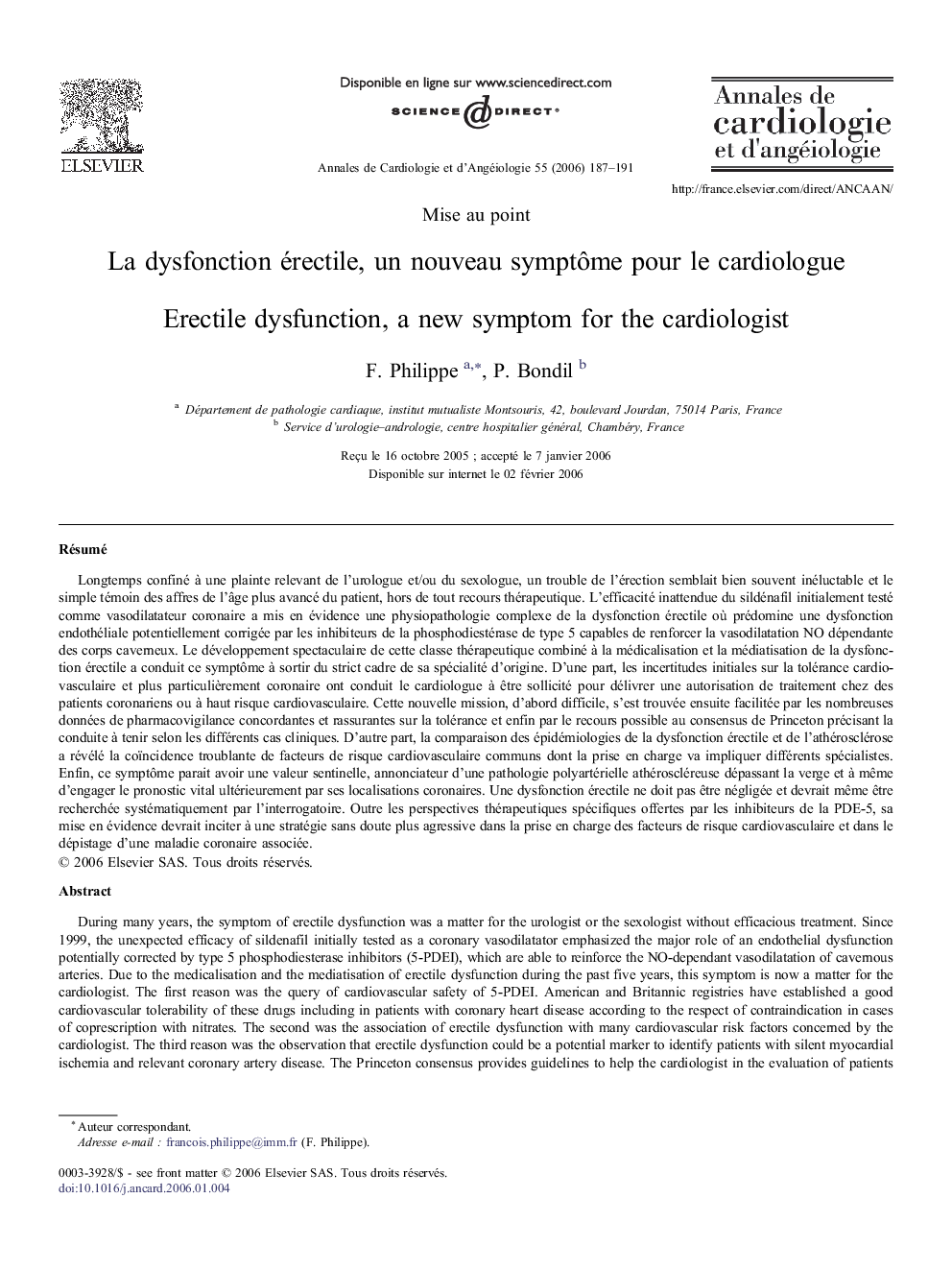| Article ID | Journal | Published Year | Pages | File Type |
|---|---|---|---|---|
| 2869712 | Annales de Cardiologie et d'Angéiologie | 2006 | 5 Pages |
Abstract
During many years, the symptom of erectile dysfunction was a matter for the urologist or the sexologist without efficacious treatment. Since 1999, the unexpected efficacy of sildenafil initially tested as a coronary vasodilatator emphasized the major role of an endothelial dysfunction potentially corrected by type 5 phosphodiesterase inhibitors (5-PDEI), which are able to reinforce the NO-dependant vasodilatation of cavernous arteries. Due to the medicalisation and the mediatisation of erectile dysfunction during the past five years, this symptom is now a matter for the cardiologist. The first reason was the query of cardiovascular safety of 5-PDEI. American and Britannic registries have established a good cardiovascular tolerability of these drugs including in patients with coronary heart disease according to the respect of contraindication in cases of coprescription with nitrates. The second was the association of erectile dysfunction with many cardiovascular risk factors concerned by the cardiologist. The third reason was the observation that erectile dysfunction could be a potential marker to identify patients with silent myocardial ischemia and relevant coronary artery disease. The Princeton consensus provides guidelines to help the cardiologist in the evaluation of patients with erectile dysfunction according to the cardiovascular risk level. Henceforth, erectile dysfunction should be considered by the cardiologist as “a sound of silence” of myocardial ischemia and should encourage to more aggressive evaluation and treatment of cardiovascular risk factors.
Keywords
Related Topics
Health Sciences
Medicine and Dentistry
Cardiology and Cardiovascular Medicine
Authors
F. Philippe, P. Bondil,
